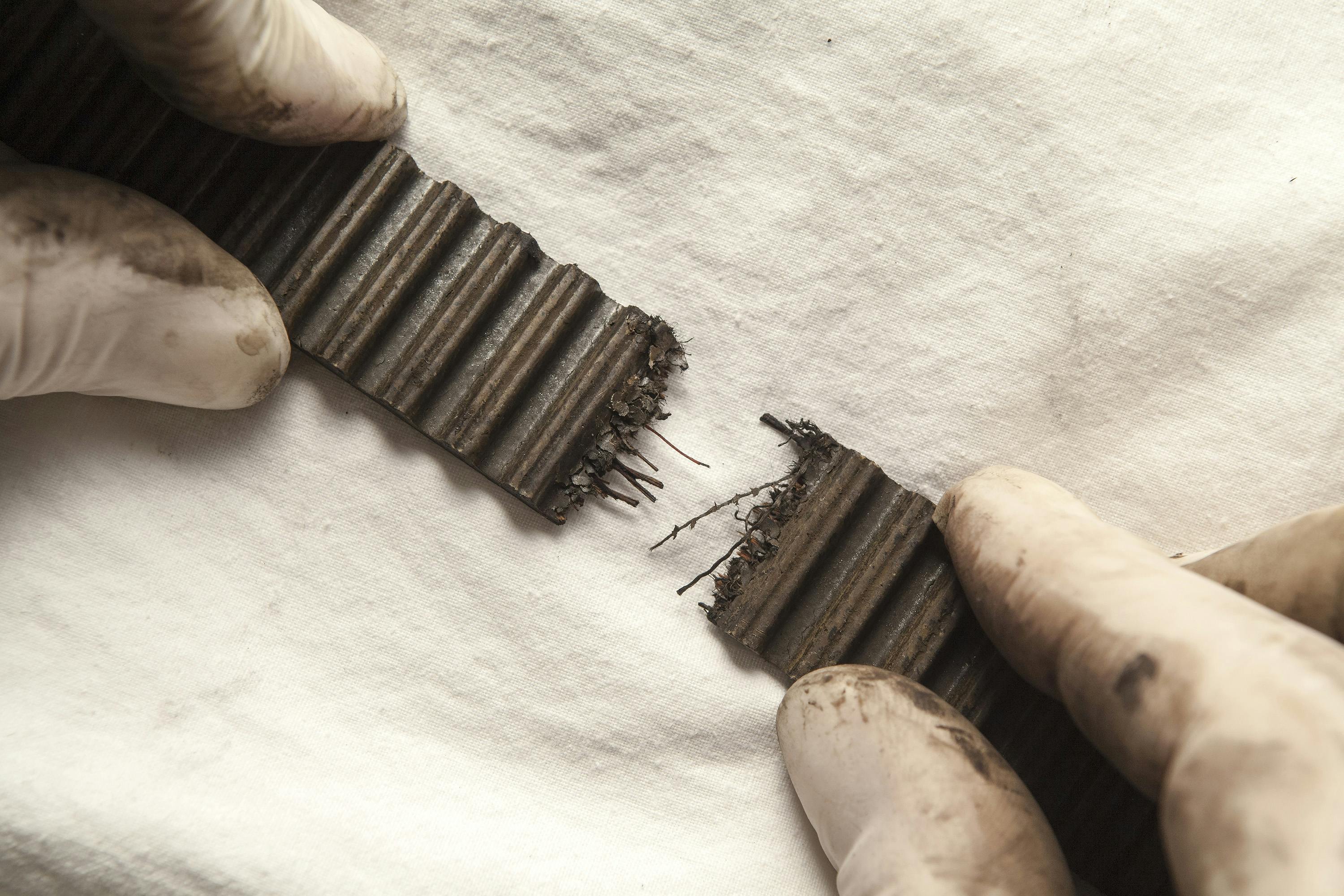How and why do timing belts fail?

Although modern timing belts are marvels of engineering, they are not indestructible. In fact, even relatively new timing belts can, and do, fail in different ways for a variety of reasons. Let us look at a few examples-
The timing belt has snapped
Timing belts that snap off cleanly between two teeth is perhaps the most common way that timing belts fail. This type of failure is most commonly caused by the following-
- Damaged water pumps that do not rotate freely can create shock loads that can snap even a new timing belt
- Damaged idler pulley bearings that do not rotate freely. The added load can be high enough to snap old or well-used timing belts
- Damaged tensioner pulley bearings that do not rotate freely. This has the same effect as seized idler pulleys
The timing belt is frayed along one edge
This usually happens when the bearings in idler and tensioner pulleys start to fail. Worn bearings in these pulleys change the pulley's alignment, which places unequal loads on the timing belt.
Note that this can also be caused by improper or incorrect installation of a new timing belt.
The timing belt backing is stripped off
This usually happens when a damaged bearing in an idler or tensioner pulley begins to seize up. Because the damaged pulley does not rotate freely, the timing belt is "dragged" over the pulley. This creates huge amounts of friction between the timing belt and the pulley, which can strip the backing from the belt.
Timing belt teeth have sheared off
Multiple teeth usually shear off where the timing belt passes around the small drive pulley. Common causes of sheared teeth include-
- Insufficient belt tension caused by improper installation procedures
- Damage to the timing belt caused by engine oil leaks
- Excessive wear of one or more sprockets that damage the belt’s teeth
- Engine overheating that causes one or more camshafts to bind or stick
- Low engine oil level that causes camshafts to bind or stick
Cracks on the outside of the timing belt
Cracks usually appear between the timing belt’s teeth, and especially if the outside of the belt has a shiny appearance. The most common causes include the following-
- Severe engine overheating
- Extreme heat caused by partially seized idler and/or tensioner pulley bearings
- This also happens on timing belts that are grossly overdue for replacement
- Excessive belt tension caused by improper installation procedures
Note that many of these kinds of failures can be prevented by having the timing belt inspected regularly. In this case, “regular” would be during each scheduled service. Moreover, car service schedules prescribe fixed timing belt replacement intervals that should NOT be ignored.
If you are in doubt about the condition of the timing belt on your car, we highly recommend that you Find a Mechanic. Here, you can find professional mechanics that can perform a professional inspection of your timing belt. You will also find professional mechanics that can replace the timing belt on your car if this is required.
